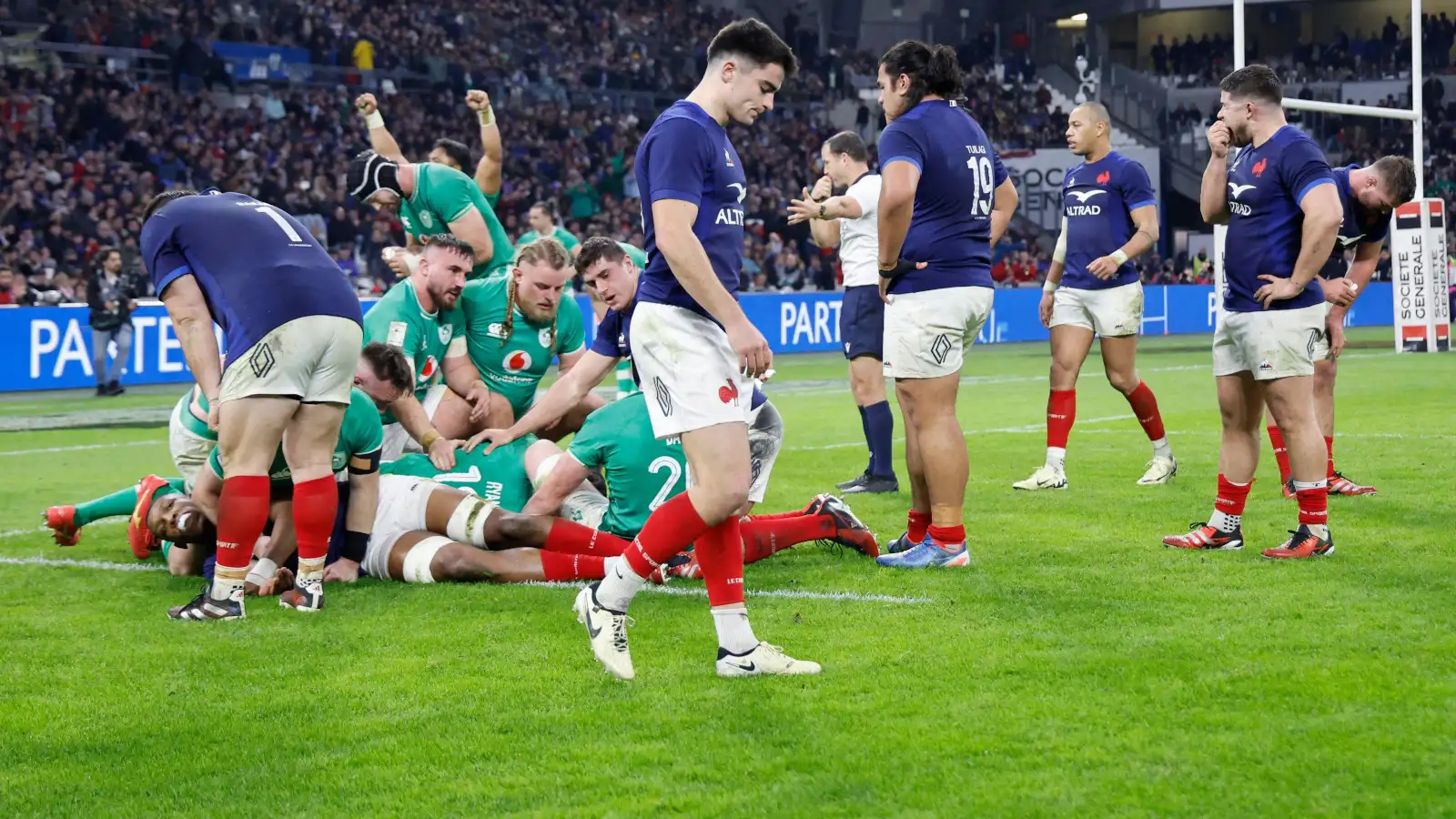Rugby serves as a mirror reflecting the diverse styles and approaches adopted by different nations. Within this spectrum, France and Ireland emerge as compelling examples, each presenting a distinct rugby identity. This article scrutinizes the strategic disparities, set-piece intricacies, player compositions, running styles, kicking techniques, defensive strategies, attacking plays, and point-scoring methods that epitomize French and Irish rugby.

Strategy and Set Pieces: French Rugby: Embracing spontaneity and flair, French rugby thrives on unpredictable playmaking. Set pieces serve as launchpads for creativity rather than scripted maneuvers. A dynamic blend of robust forwards and agile backs allows for versatile gameplay, with an emphasis on off-the-cuff movements and exploiting gaps in the opposition’s defense.
Irish Rugby: In contrast, Irish rugby operates with meticulous precision, particularly in set-piece scenarios. Methodical planning underpins their strategy, with set plays meticulously crafted to capitalize on specific situations. Forward dominance in scrums and lineouts often lays the foundation for calculated attacks, reflecting Ireland’s strategic approach to gaining territory and possession.
Builds of Players: French Rugby: French rugby cherishes diversity in player builds, showcasing a range of body types across the field. While forwards prioritize strength and mobility, backs often boast agility and creativity. This heterogeneous composition enables multifaceted gameplay, with players leveraging their unique attributes to exploit tactical opportunities.
Irish Rugby: Ireland’s player builds emphasize functional fitness and technical proficiency. Forwards exhibit robustness and endurance, excelling in the physical aspects of the game such as scrummaging and breakdown work. Backs epitomize precision and adaptability, with a focus on executing plays with clinical efficiency.
Ruck and Running Style: French Rugby: Ruck dynamics in French rugby reflect a balance between physicality and finesse. Players engage with intensity, aiming to secure quick, clean ball for the backs to exploit. Running styles are characterized by spontaneity and audacity, with players encouraged to express themselves through instinctive offloads and elusive running lines.
Irish Rugby: Irish rugby prioritizes ruck efficiency and ball retention, with players committed to securing possession and controlling the tempo of the game. Running styles are disciplined and methodical, with players adhering to predetermined patterns and support lines to maintain continuity and build pressure on the opposition.
Kicking and Defense: French Rugby: Kicking in French rugby serves as a supplementary tool rather than a primary tactic. Players employ kicks strategically to disrupt the opposition’s defensive line or exploit space behind the defense. Defensive strategies prioritize aggression and line speed, with players aiming to apply pressure and force turnovers through disruptive tackling and counter-rucking.
Irish Rugby: Kicking plays a pivotal role in Irish rugby, serving as a tactical weapon for territory and possession control. Players execute kicks with precision and accuracy, aiming to pin the opposition deep in their own territory or create scoring opportunities through well-placed kicks. Defensive structures emphasize organization and communication, with players working in unison to shut down space and nullify attacking threats.
Attacking Plays and Point-Scoring Methods: French Rugby: French attacking plays are characterized by creativity and spontaneity, with players encouraged to capitalize on improvisational opportunities. Points are often scored through expansive running rugby, with backs exploiting overlaps and creating try-scoring opportunities through inventive offloads and support play.
Irish Rugby: Irish attacking plays prioritize structure and execution, with players adhering to predetermined patterns and phases of play. Points are typically scored through patient buildup and methodical ball retention, with forwards and backs combining to create scoring opportunities through clinical finishing and accurate kicking.
Conclusion: In conclusion, the divergent styles of French and Irish rugby underscore the multifaceted nature of the sport. While French rugby thrives on spontaneity, creativity, and flair, Irish rugby prioritizes precision, discipline, and tactical efficiency. These contrasting approaches reflect each nation’s unique rugby identity, shaped by cultural influences, historical traditions, and strategic philosophies. Despite their differences, both styles contribute to the rich tapestry of rugby and exemplify the diverse strategies and tactics employed by nations around the world.
